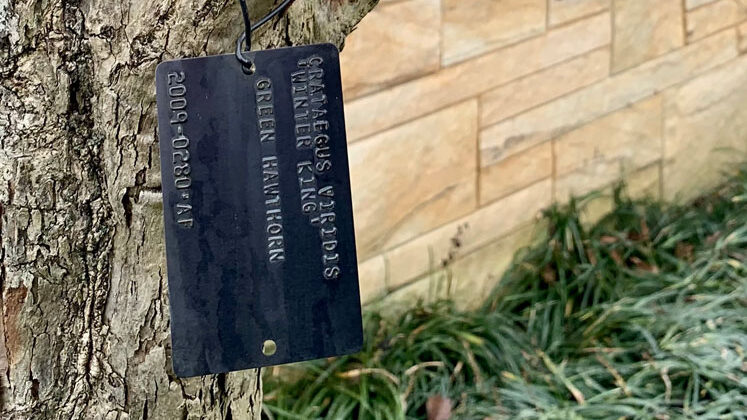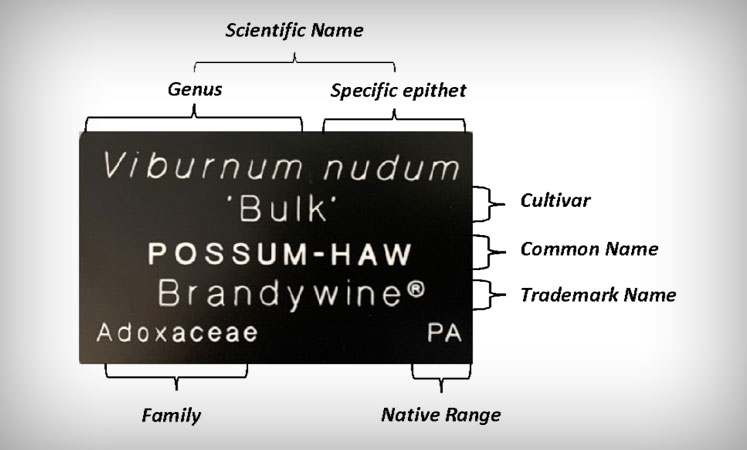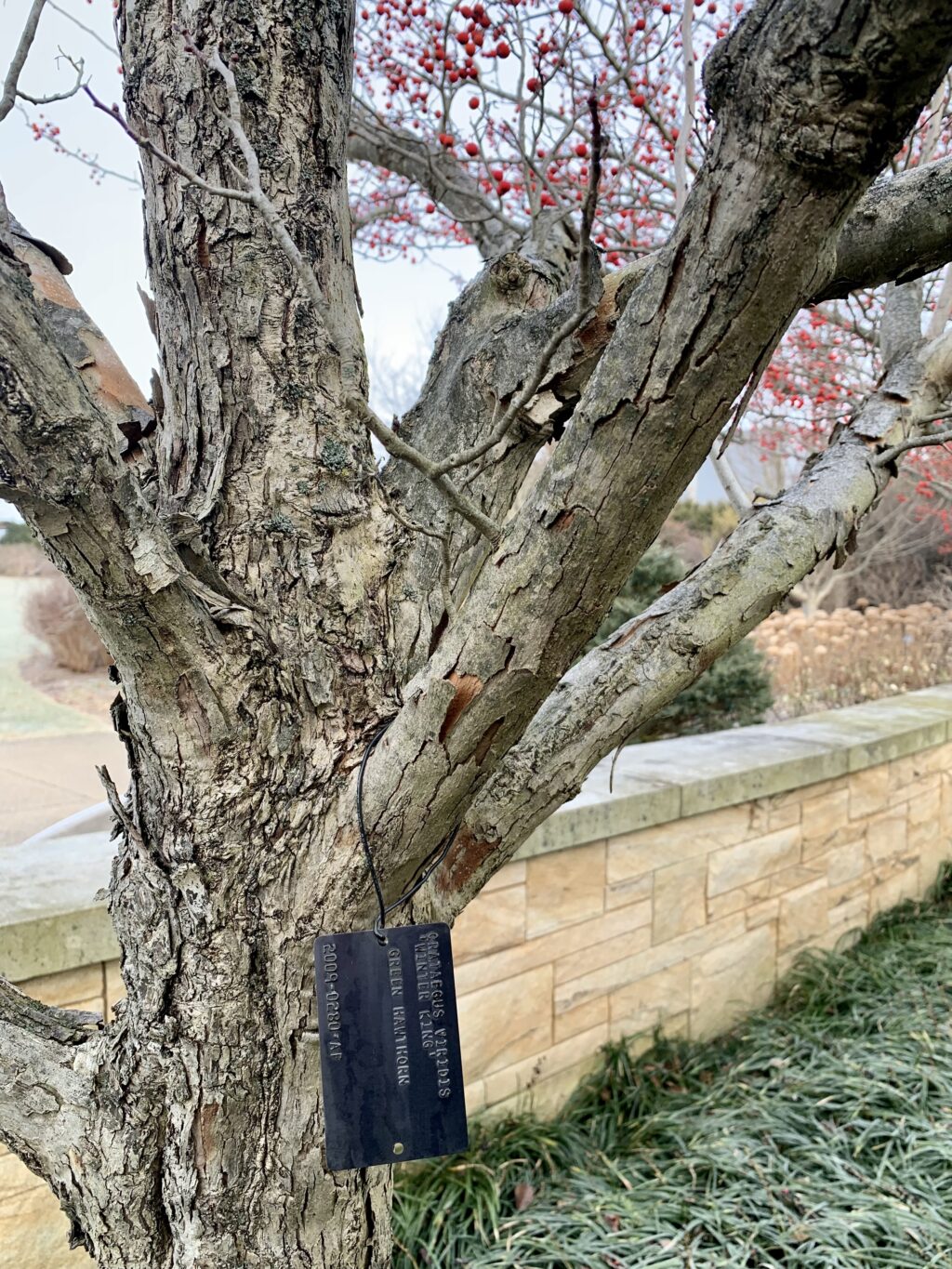
Display Labels
You may notice that many of the trees, shrubs, perennials, and annuals in the H.O. Smith Botanic Gardens are outfitted with display labels that identify the plants. Some of the information on the labels is written in Latin, and some items are abbreviated. Here is how our display labels are formatted:

Scientific name: a name composed of two parts, the genus and specific epithet, which together denote the plant species. Each plant species has its own individual scientific name, which is used in research and horticulture around the world to provide clarity. The entire scientific name is italicized, with the first letter of the genus being capitalized. Other infraspecific-rank names may also appear on labels: subspecies (subsp.), varietas (var.), and forma (f.) are the most common.
Cultivar: The term “cultivar” is a contraction of the words “cultivated variety.” A cultivar is a plant that has been selected and maintained because of desirable characteristics such as flower form, foliage color, fruit size, or growth habit. The cultivar is indicated by single quotations after the scientific name.
Common name: a name used by a general community to describe the plant species. Common names can vary between regions, and one plant species can have several different common names. For stylistic purposes, the common name is indicated on our labels in bold with capitalized letters, although common names are not normally capitalized.
Trademark name: a name commonly used in nursery production to label and sell cultivars. The trademark name is shown after the common name with a trademark (™) or registered trademark (®) symbol.
Family: the taxonomic rank above genus. All members of a plant family are genetically related, having evolved from a common ancestor. The family is shown in the bottom left-hand corner of the label.
Native range: the geographical area where the plant species can be naturally found. The range is found in the bottom right-hand corner of the label and is indicated by the following abbreviations:
- Asia = AS
- Australia = AU
- Africa = AF
- Europe = EU
- North America = NA
- Pennsylvania = PA
- South America = SA
Accession Labels
You may also notice black metal labels on some of the plants in the Arboretum. All woody accessions — trees, shrubs, and vines — are labeled with an aluminum accession tag identifying the plant’s scientific name, common name, and accession number.
These labels are used for our curatorial purposes and help us keep track of individual accessioned plants in our collections.
Each item in our plant collections is assigned a unique accession number. The first four digits of the accession number indicate the year the plant was received, and the last four are sequential numbers starting with 0001 for the first plant of the year, followed by lettered qualifiers that indicate “multiples” of the same type of plant. For example, the accession number 2020-0001*AD would indicate that the plant was acquired in 2020, that it was the first plant of the year to be accessioned, and that it was received as part of a larger group of plants of the same type, also including items AA, AB, and AC.





